Tekken is a Japanese media franchise centered on a series of fighting games developed and published by Bandai Namco Entertainment. The franchise also includes film and print adaptations.

Tekken 5 (鉄拳5) is a fighting game developed and published by Namco for the arcades in 2004, and for the PlayStation 2 in 2005. It is the fifth main and sixth installment, in the Tekken series, marking the tenth anniversary of the series. The game is set shortly after the events of Tekken 4 showing a new person named Jinpachi taking over the zaibatsu special forces while a sidestory focuses on the protagonist Jin Kazama as he faces several enemies from the G Corporation. The home version also contains a collector's edition of sorts, as it includes the arcade versions of Tekken, Tekken 2, Tekken 3, and StarBlade.
Isshin Chiba is a Japanese voice actor who appeared in 35 films since he first started acting in 1990 and is best known for doing the voice of Jin Kazama from the Tekken series.
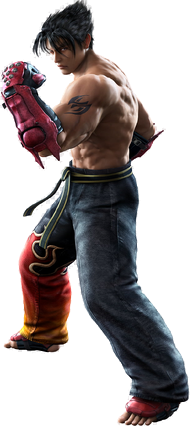
Jin Kazama is a character of the Tekken fighting game series created by Bandai Namco Entertainment. He was introduced as the protagonist in the 1997 game Tekken 3 and has been the central character of the series from that game onwards. Trained by his grandfather Heihachi Mishima, Jin wishes to avenge the apparent death of his mother Jun Kazama by Ogre. Meanwhile Heihachi betrays Jin to awaken a genetic abnormality within his body known as the Devil Gene.

Heihachi Mishima is a fictional character in Tekken fighting game series created by Bandai Namco Entertainment, serving as its main antagonist. Introduced as the boss character from the first Tekken video game from 1994, Heihachi appears as the CEO/leader of a military firm known as the Mishima Zaibatsu founded by his father Jinpachi Mishima. Heihachi was the protagonist of Tekken 2 and one of the two main characters of Tekken 7 along with his son Kazuya Mishima, furthermore Heihachi was a boss character in two additional main installments of the series. He is opposed by many of his relatives who wish for his death out of revenge and to take over the Mishima Zaibatsu. This happens across the series and one of the creators of Tekken Katsuhiro Harada has called it a "family feud". Heihachi wants to defeat his son and grandson, Kazuya Mishima and Jin Kazama respectively. Heihachi's backstory and motives are revealed in Tekken 7, in which he is killed by Kazuya and thus does not appear in Tekken 8. Heihachi has two known illegitimate children who are playable in the series, the first is the hero Lars Alexandersson, who debuted in Tekken 6; and the second is Reina, who was introduced in Tekken 8, uses some of his moves and has a similar personality, and is later revealed to be also a Devil Gene user as both Kazuya and Jin.

Kazuya Mishima is a character in Bandai Namco's Tekken fighting game series, who first featured as theprotagonist in the original 1994 game and later became one of the main antagonists of the series since. He later returns as the main co-protagonist of Tekken 7, before assuming his role as the main antagonist in Tekken 8. The son of worldwide conglomerate Mishima Zaibatsu CEO Heihachi Mishima, Kazuya seeks revenge against his father for throwing him off a cliff years earlier. Kazuya becomes corrupted in later games, seeking to obtain more power and later eventually comes into conflict with his son Jin Kazama. Kazuya Mishima possesses the Devil Gene, a demonic mutation, which he inherited from his late mother, Kazumi Mishima, which can transform him into a demonic version of himself known as Devil Kazuya. Devil Kazuya has often appeared as a separate character in previous installments prior to becoming part of Kazuya's moveset in Tekken Tag Tournament 2 and later games. Kazuya Mishima is also present in related series media and other games.

Tekken 6 is a fighting game developed and published by Bandai Namco Games. It is the sixth main and seventh overall installment in the Tekken franchise. It was released in arcades on November 26, 2007, as the first game running on the PlayStation 3-based System 357 arcade board. A year later, the game received an update, subtitled Bloodline Rebellion. Both versions also saw a limited release in North America. A home version based on the update was released for the PlayStation 3 and Xbox 360 on October 27, 2009. This was the first time a main installment was produced for another console. It was ported for the PlayStation Portable on November 24, 2009. The game was produced by Katsuhiro Harada, who aimed to give the fights a strategic style while remaining faithful to the previous games in the series. This was the first Tekken game with Harada as producer. He replaced the longtime producer Hajime Nakatani from the first game, where Harada started out as the voice actor for Marshall Law and Yoshimitsu, and a part of the original development team.

Tekken (鉄拳) is a fighting game developed and published by Namco. It was originally released for arcades in 1994, and ported to the PlayStation the following year. The game was well-received by critics. It is the first entry in the Tekken series, with a sequel, Tekken 2, being released in 1995.

The following is a list of characters from the fighting game series Tekken. Characters are listed in alphabetical order.
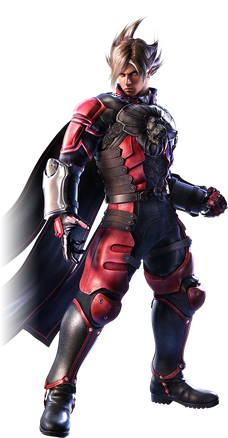
Lars Alexandersson is a character from the Tekken fighting game franchise by Bandai Namco Entertainment. First introduced in the 2008 arcade game update Tekken 6: Bloodline Rebellion, serving as a main protagonist of Tekken 6 console version, which itself based on Bloodline Rebellion arcade update.

Tekken X Street Fighter was a planned crossover fighting game that was being developed by Bandai Namco Entertainment. It was supposed to cross the universes of Namco's Tekken and Capcom's Street Fighter into one game, creating a roster from both franchises. The game was announced at the 2010 San Diego Comic-Con International by Bandai Namco producer Katsuhiro Harada. The gameplay of Tekken X Street Fighter was going to feature the same 3D fighting game engine of the Tekken franchise, as opposed to Street Fighter X Tekken, which features the 2D-style gameplay of Street Fighter IV. Bandai Namco put the game's development on hold in 2016.

Tekken Tag Tournament 2 is the eighth installment in the Tekken fighting game series and the sequel to Tekken Tag Tournament. It was released for the arcades in September 2011. It received an update, subtitled Unlimited, in March 2012. A console version based on the update was released for PlayStation 3 and Xbox 360 in September 2012, prior to the update. It was ported to the Wii U as one of the system's launch titles in November 2012, subtitled Wii U Edition.
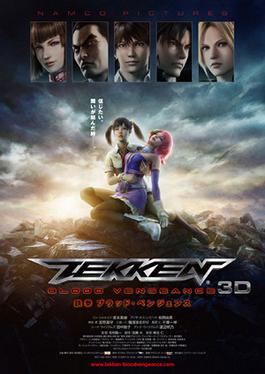
Tekken: Blood Vengeance is a 2011 Japanese 3D computer-animated science fiction martial arts film directed by Yōichi Mōri from a screenplay by Dai Satō, based on the video game series Tekken published by Namco Bandai Games. The film places focus on the young martial artist Ling Xiaoyu, who investigates experiments involving a supernatural curse related with the Mishima family, while befriending a robot named Alisa Bosconovitch. The two meet the test subject Shin Kamiya, who is being sought by his former friend Jin Kazama and his father Kazuya Mishima, but is also being used by Heihachi Mishima to set a new family fight.
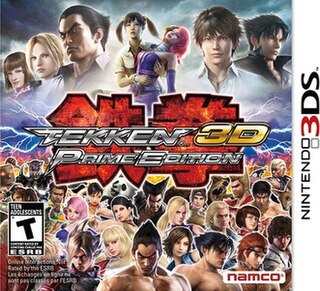
Tekken 3D: Prime Edition is a 2012 fighting video game developed by Arika and Namco Bandai Games and published by Namco Bandai Games for the Nintendo 3DS. It is the second Tekken game to be released for a Nintendo platform after the 2001 video game Tekken Advance. The game is a graphically updated version of Tekken 6 for the Nintendo 3DS, supporting the handheld's 3D capabilities and maintaining a steady 60 FPS even when running in 3D; however, the 3D is disabled during wireless play. 40 characters and stages are included in the game, as well as 700 collectable Tekken cards. In addition, the 2011 film Tekken: Blood Vengeance is included in the package.

Tekken Revolution was a free-to-play fighting video game developed and published by Namco Bandai Games. It was released on the PlayStation 3 via the PlayStation Store in June 2013. It is the first game in the Tekken franchise to be made free-to-play and the first to be released exclusively in digital format. It is no longer available in Europe as of 2016.

Katsuhiro Harada is a Japanese game director and producer for Bandai Namco Entertainment. He is best known for his work with the fighting game series Tekken.

Tekken 7 is a fighting game developed and published by Bandai Namco Entertainment. It is the seventh main and ninth overall installment in the Tekken series, and is the first in that series to be released for PC. Tekken 7 was released to arcades in March 2015. An updated arcade version, Tekken 7: Fated Retribution, was released in July 2016, and features expanded content including new stages, costumes, items and characters. The home versions released for PlayStation 4, Windows, and Xbox One in June 2017 were based on Fated Retribution.
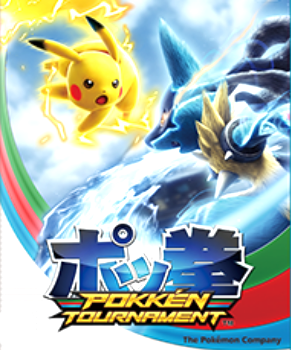
Pokkén Tournament is a fighting video game developed by Bandai Namco Entertainment. The game combines gameplay elements from Bandai Namco's Tekken series and other fighting games, such as 3D and 2D movement, with characters from the Pokémon franchise. It was released for Japanese arcades in July 2015, and worldwide for the Wii U in March 2016. An enhanced port for the Nintendo Switch, Pokkén Tournament DX, was released in September 2017. The arcade version was published by Bandai Namco, the Japanese console versions were published by The Pokémon Company, and the console versions outside of Japan were published by Nintendo.
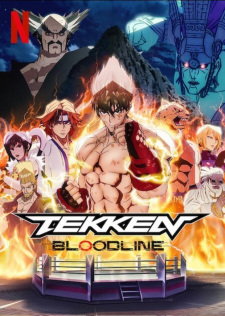
Tekken: Bloodline is an action fantasy anime television series based on the video game series Tekken by Bandai Namco Entertainment. The series loosely adapts the events of the 1997 video game Tekken 3 and follows the young fighter Jin Kazama in his quest to defeat Ogre, the creature that killed his mother Jun. Jin's quest leads to him being trained to track Ogre by his violent grandfather Heihachi Mishima, who is hosting a fighting tournament called the King of Iron Fist. The show premiered on Netflix on August 18, 2022, for a total of six episodes.

Tekken 8 is a fighting game developed by Bandai Namco Studios and Arika. Bandai Namco Entertainment published the game for PlayStation 5, Windows, and Xbox Series X/S on January 26, 2024. It is the eighth canon release and tenth overall entry in the Tekken series. The game story mode, titled The Dark Awakens, takes place six months after the events of its predecessor and focuses on the final confrontation between the main characters, father Kazuya Mishima and son Jin Kazama, with the latter wishing to kill the former in order to end the chaos within their family lineage. The game's story features 32 former and new characters, each with their own narrative that contributes to the overall story.



















